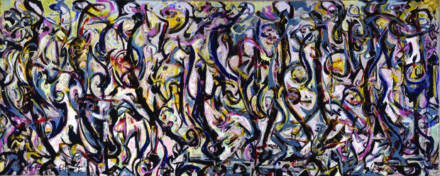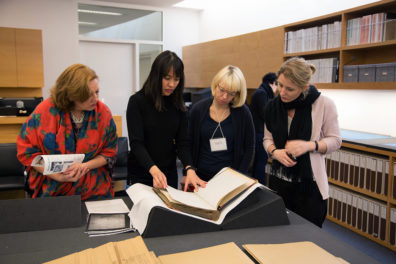Conserving the Church of Kuñotambo
[DISTANT CHATTER]
Everyone in this town is happy. All of the neighbors from the surrounding towns are delighted.
I think that the recovery of this monument is not only physical. But it also means everything that complements faith. Also, it’s an opportunity to re-value some cultural processes that have been interrupted over time.
God has wanted our temple to be restored.
[BELL TOLLING]
[MUSIC PLAYING]
Peru is a high seismic risk area, and here in this region, there have been many seismic events. As a result, these monuments have been deteriorating. A lot of cracking has appeared, and in some cases, collapses, like in the case of Kuñotambo.
[MUSIC PLAYING]
In 2006, the Getty Conservation Institute started a study on how to reinforce historic buildings. And to that end, they came to Peru, where there is a huge amount of these types of buildings.
[MUSIC PLAYING]
One of the problems that earthen buildings have is that they fall into the category of unreinforced masonry buildings. That means that in an earthquake, they’d suffer from sudden collapse. One of the major issues with earthen sites is that the techniques that exist to retrofit those buildings are not suitable for earthen materials.
[MUSIC PLAYING]
In 2007, there was an earthquake that had its epicenter in Ica, Peru.
[MUSIC PLAYING]
Mere days after the earthquake, the Getty Conservation Institute took a trip through the southern region of Peru to evaluate the state of different buildings.
[MUSIC PLAYING]
In 2009, the Getty designed the methodology to develop the seismic retrofitting project that was mostly divided in four phases. During the first phase, we have to choose four buildings that represent four different typologies. One of them is this cathedral, the Cathedral of Ica, that was damaged during the 2007 earthquake.
We selected Hotel Comercio; it’s an historic site that is located in the historic center of Lima. We selected Casa Arones, that is in the historic center of Cusco. And for the case of the church in the Andes, we selected the Church of Kuñotambo, that has never been touched, built in the 17th century, and has wall paintings.
[MUSIC PLAYING]
[DISTANT CHATTER]
[MUSIC PLAYING]
In the beginning, we found the church in a very neglected state of repair. It was a very deteriorated state which I had never, in other jobs, had such an experience before.
[MUSIC PLAYING]
It was in a state where it was practically already collapsed.
[MUSIC PLAYING]
The Kuñotambo church project has a special challenge. It is the combination of the traditional way of working that we have here in our region, combined with new contributions that come from the Getty Conservation Institute, referring to the structural reinforcement of the monuments in mudbrick, and also to the criteria of intervention of the mural paintings which exist in large parts of the church.
The engineers from Peru have been working on this and researching adobe constructions for many, many years, architects as well. So there is a vast amount of information that we could take advantage of. We also have really reliable partners here that could implement the techniques that we design. They have a lot of expertise implementing projects.
So in Kuñotambo, the work has already started, and I think the institution is really proud and excited by the fact that we were able to do all this research through all these years. And we are able to partner with our Peruvian colleagues to actually carry on the implementation.
It’s not only the fact that we have provided this analysis and understanding of the seismic behavior of the church. But also, we have learned a lot from the way they carry on projects. And we have been able to also work with them in the stabilization of the wall paintings prior to the retrofitting of the site.
I think it has been one of the most important challenges to have worked on the mural paintings without disassembling the painting itself. That is to say, working with them on site, making the reinforcement problem be worked on from the outside in and not the other way around. So as not to touch the mural paintings other than in their conservation stage.
This project was highly academic, purely developed in a scientific manner with results that will be invaluable for the future study of conservation processes.
I hope that from now on, many more projects will take into account some of the criteria that have been considered in this project.
[BELL TOLLING]
[MUSIC, DRUMS PLAYING]
[APPLAUSE]
I am very excited. I have had the satisfaction of working with friends at Getty. I have never imagined working with them and have that experience. That brings me a lot of excitement.
[MUSIC PLAYING]
There is a great expectation and joy to participate in this event. We have been here all this time, doing this work and meeting the people, and we know that they have a very special quality, that still maintain many of the Andean customs that happily coexist in this area over time.
The restoration of the temple in Kuño Tambo will allow the people of these communities to look back at themselves and bring life back to this monument. It will be an invaluable contribution to the culture of the region.
[MUSIC PLAYING]





What a wonderful project! Seeing the video brought tears to my eyes–out of happiness for a change! How delightful to see that church restored to such brilliance, and to see the smiles of the people. Thank you.
What a wonderful story! It is so promising when art meets science engineering, and all for the good of a community!
This is so beautiful. What a fantastic way of giving and extending culture to the world, to those that choose to identify and to be interested
Thank you,
Ruth
It was a total pleasure to watch the video on the restoration of the church in Kuñotambo, Peru. The significance of this incredible project will be appreciated & passed on to many future generations! The indigenous people are very hardworking, honest, humble, and very sincere.
Your gift to him is immeasurable!
I am very proud that the Getty takes on these amazing projects! It’s a testament to your dedication of preserving art & culture around the world! A million thanks to all of you!!
Sonia Triana
Beautiful story. My parents are from Peru and I have a profound love for the country. I was not previously aware of the Getty’s work in Peru – to watch this video and see the results of your magnificent work was inspiring and enlightening. Thank you so much for your generosity and appreciation of Peru’s history, its culture and its people.